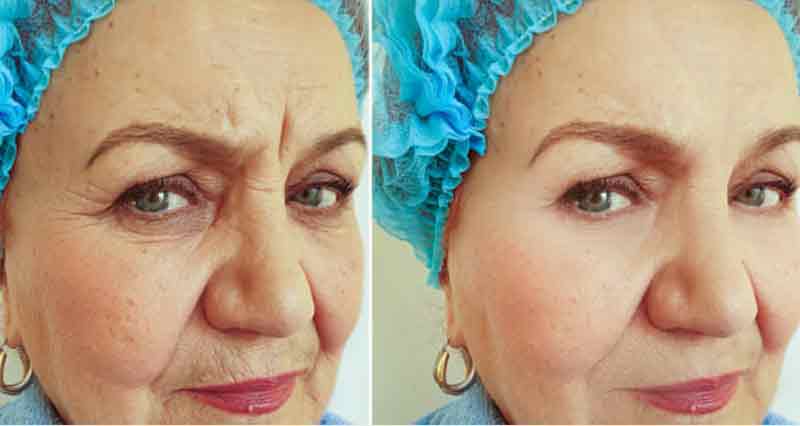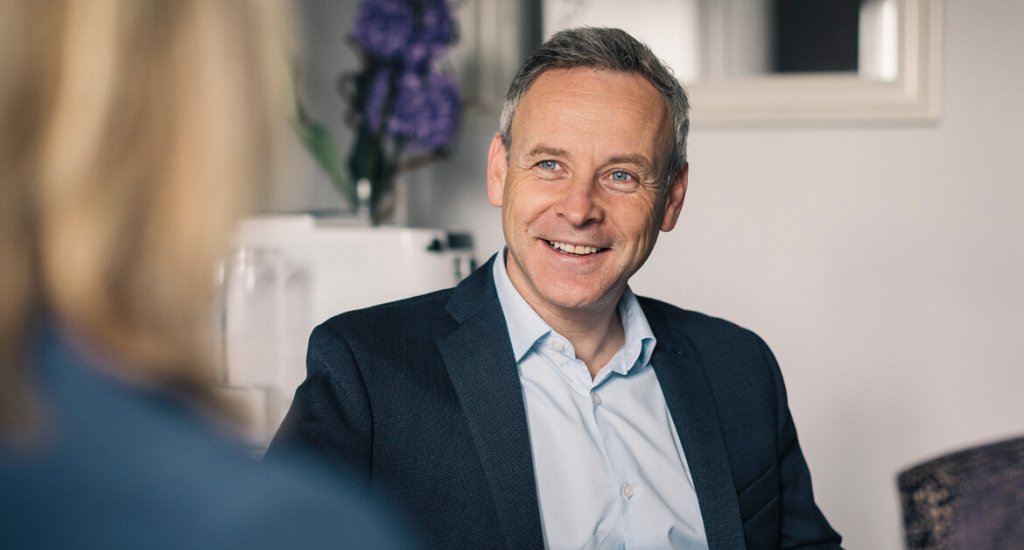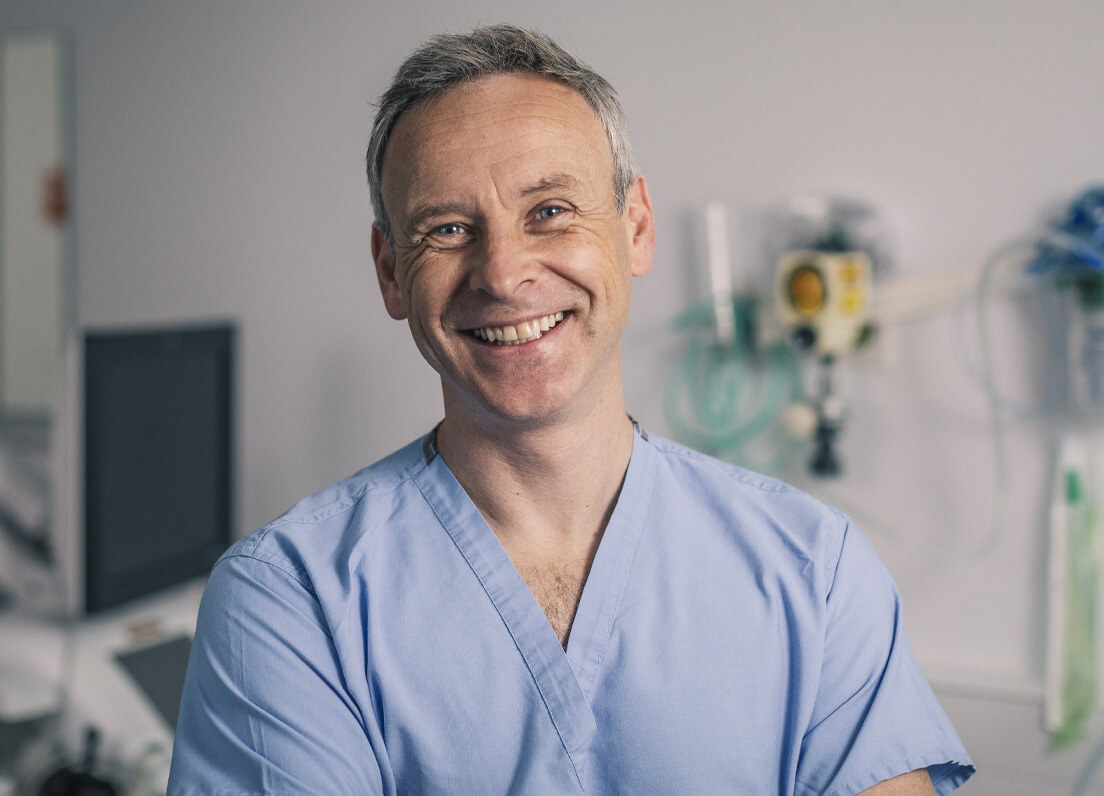Combining Procedures for a Comprehensive Facial Rejuvenation
A facelift, medically known as rhytidectomy, is a procedure aimed at giving your face a more youthful appearance. It involves the removal of excess facial skin and the tightening of underlying tissues. Your journey starts with a consultation. During this meeting, your surgeon will discuss your goals, evaluate your face, and explain what a facelift can and cannot do for you. It’s an opportunity for you to ask questions and set realistic expectations, especially if you are interested in combining procedures for a superior aesthetic result.
In this blog, Consultant Plastic Surgeon Anthony MacQuillan will discuss the advantages of combined procedures and what procedures to have with a facelift.
Why Combine Other Procedures with a Facelift
When considering a facelift, it’s often beneficial to think about other procedures that can complement and enhance the results. Combining procedures not only provides a more comprehensive transformation but can also offer practical advantages. Here’s a detailed look at why combining procedures with a facelift can be a wise decision:
Achieving a Balanced and Harmonious Look
- Full Face Rejuvenation: A facelift primarily targets the lower half of the face. By adding other procedures, such as eyelid surgery or a brow lift, you can ensure that the rejuvenation effects are balanced throughout your entire face.
- Customised Results: Every face is unique, and combining procedures allows for a tailored approach. You and your plastic surgeon can assess which areas of your face could benefit most from enhancement, leading to a result that reflects your individual needs
Efficiency and Convenience
- One Recovery Period: Undergoing multiple procedures at once means you’ll only have to go through one recovery period. This is more convenient and can significantly reduce the overall time you spend recovering from cosmetic surgeries
- Saving Time: Combining procedures can also save you time in the long run. You won’t need to schedule separate surgeries and pre-operative consultations for each procedure and you will only need one episode of down time.
Cost Considerations
- Potential Cost Savings: While combining procedures might have a higher upfront cost, it can be more economical than having multiple separate surgeries (one of the biggest savings being less time overall off work). Additionally there are savings related to overnight hospital costs (you are only occupying a single bed even if you are having multiple procedures) and some procedures have a lower ‘bundle’ price.
- Investment in Appearance: It’s important to view these procedures as an investment in your appearance and well-being. While cost is an important factor, the value of feeling more positive about your appearance can outweigh the monetary investment
Techniques and Technology
- Advanced Surgical Techniques: Modern facelift techniques are sophisticated and can be easily combined with other facial procedures. This integration allows Anthony to use cutting-edge methods for the best outcomes.
- Technological Advances: The advancements in technology also mean that combining procedures can be done more safely and effectively than ever before, resulting in more natural-looking and long-lasting results
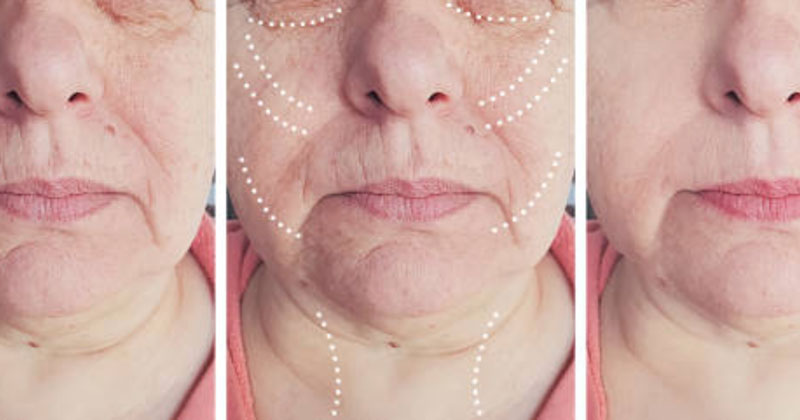
Procedures to Combine with a Facelift
These additional procedures can provide a more complete and satisfying outcome. Each of these procedures addresses different areas of the face, and when combined with a facelift, they can create a balanced and rejuvenated appearance that enhances your overall look:
Eyelid Surgery (Blepharoplasty)
Eyelid surgery, also known as blepharoplasty, is a popular choice to combine with a facelift. This procedure focuses on correcting drooping eyelids and reducing under-eye bags. Here’s what you need to know:
- Improves Eye Appearance: As you age, your eyelids can become saggy or puffy, making you look tired. Eyelid surgery can remove or reposition excess skin and fat, giving you a more alert and refreshed appearance
- Enhances Facelift Results: When you combine eyelid surgery with a facelift, the improvement isn’t just limited to your lower face. Your entire face gains a rejuvenated look
- Procedure Details: The surgery usually involves small incisions along the natural lines of your eyelids. Through these incisions, excess skin and fat are removed or repositioned. The scars from these incisions fade and become barely noticeable
Forehead Lift (Brow Lift)
A forehead lift, or brow lift, is another procedure that pairs well with a facelift. It aims to raise sagging eyebrows and smooth forehead lines. Here’s what it involves:
- Targets the Upper Face: A brow lift focuses on the upper part of your face, reducing wrinkles and repositioning a low or sagging brow
- Complements a Facelift: When combined with a facelift, a brow lift helps create a balanced look by addressing ageing signs in the upper face, which a facelift alone might not correct
- Surgical Approach: The procedure can be performed using different techniques, such as excision of a strip of skin along the front of the hairline or directly above the eyebrows themselves (an open brow lift and a direct brow lift respectively) or through limited incision placed within the hair (endoscopic brow lifts and gliding brow lifts). The choice depends on your specific conditions and desired outcomes
Neck Lift
A neck lift is an excellent procedure to combine with a facelift, particularly if you’re concerned about sagging skin or excess fat in the neck area.
- Addresses the Neck Area: A neck lift tightens loose neck muscles, removes excess skin, and can reduce fat deposits in the neck area, resulting in a smoother, more defined neck and jawline
- Creates a Seamless Look: Pairing a neck lift with a facelift ensures that your rejuvenation doesn’t stop at the chin, giving you a more comprehensive and harmonious result
- Procedure Insights: The surgery often involves incisions behind the ears and sometimes under the chin. Recovery time and specifics will vary based on the extent of the surgery
Fat Grafting
Fat grafting is an increasingly popular addition to facelift procedures. It helps help restore lost volume using your own fat (so it is completely biocompatible) and can enhance the overall results of a facelift.
- Restores Facial Volume: As you age, your face loses volume. Fat grafting can restore this lost volume, particularly in areas like the cheeks, lips, and under the eyes
- Enhances Facelift Outcomes: By adding volume, these procedures complement the tightening effect of a facelift, leading to a more youthful and natural appearance
- Procedure Overview: Fat grafting involves transferring fat from another part of your body to your face.
Choosing the Right Procedures for You
It’s important to consider what you really want to achieve. This self-assessment guides you in choosing the right procedures to combine with a facelift. Here’s how to assess your needs and goals:
- Identify Areas of Concern: Look at your face in the mirror. Which areas do you feel need improvement? Is it the sagging skin around your neck, the wrinkles on your forehead, or the bags under your eyes? Knowing which areas bother you the most will help you understand what additional procedures might be beneficial
- Set Realistic Expectations: It’s important to have realistic expectations about what cosmetic surgery can achieve. While these procedures can enhance your appearance, they won’t completely change how you look or make you look like someone else
- Consider Your Lifestyle: Think about your lifestyle and how it might affect or be affected by the surgery. For instance, if you have a busy schedule, you might prefer procedures with shorter recovery times
- Long-term Outlook: Consider how you want to look in the long term. Some procedures offer more lasting results, while others may need to be repeated after some time
Consulting with Anthony MacQuillan
Once you have a clear idea of your goals, the next step is to consult with a plastic surgeon. This is a crucial part of the process. Here’s what to expect and do during a consultation:
- Discuss Your Goals: During the consultation, openly discuss your goals and concerns. Anthony will listen to your needs, assess your facial structure, and suggest the best procedures to achieve your desired outcome
- Understand the Procedures: Anthony will explain how each procedure is done, what results you can expect, the risks involved, and the recovery process. This is your opportunity to ask questions and get a clear understanding of what to expect
- Get a Customised Plan: Every face is different, so your surgeon will provide a tailored plan that suits your specific needs. Anthony might suggest combining certain procedures and explain why they are necessary for achieving your goals
- Discuss Costs and Logistics: Don’t forget to talk about the costs, payment options, and the logistics of scheduling and recovery
Preparing for Combined Procedures
Preparing for combined facial procedures, such as a facelift with other enhancements, involves different important steps. It’s important to ensure you’re ready both physically and mentally for the surgery and the recovery period that follows. Here’s what you should consider before your surgery:
- Medical Evaluation: Anthony might ask for a full medical evaluation to ensure you’re fit for surgery. This could include blood tests and a review of your medical history. Be honest about any health conditions and medications you’re taking
- Lifestyle Adjustments: Certain lifestyle habits can affect your surgery and recovery. For instance, if you smoke, it is essential to stop at least 4 weeks before the surgery, as smoking put you at increased risk of running into significant wound healing problems (that can result in skin necrosis) and will cause you cough post operatively (due to the increased pooling of secretions in the lungs during surgery) placing you at increased risk of bleeding under the skin (a haematoma). Similarly, avoiding certain medications and supplements that can increase bleeding is important
- Arrange for Help: After your surgery, you’ll need someone to drive you home and stay with you for at least the first night. It’s also a good idea to have someone available to help you for a few days post-surgery
- Prepare Your Home: Set up a comfortable recovery area in your home. This should include a place to rest, easy access to essential items, and a stock of soft foods, especially if your surgery involves your jaw or mouth area
What to Expect During Recovery
Recovery from combined facial procedures can vary based on the extent of the surgery, but there are common experiences many patients share.
- Initial Discomfort: It’s normal to experience some discomfort, swelling, and bruising after surgery. Anthony will prescribe medication to manage pain and advise on how to reduce swelling
- Limited Activity: You’ll need to take it easy for a few weeks. Avoid strenuous activities and follow Anthony’s advice on when you can return to your normal routine
- Follow-Up Appointments: You’ll have follow-up appointments with your plastic surgeon to monitor your healing process. It’s essential to attend these appointments and follow any advice or instructions given
- Visible Changes and Healing: While you may see immediate changes after your surgery, full healing can take several months. Scars will fade over time (normally 12 to 18 months for the redness of the scars to fade) The final results of your procedures will become apparent after all the post operative swelling has resolved which is at least 12 months following surgery.
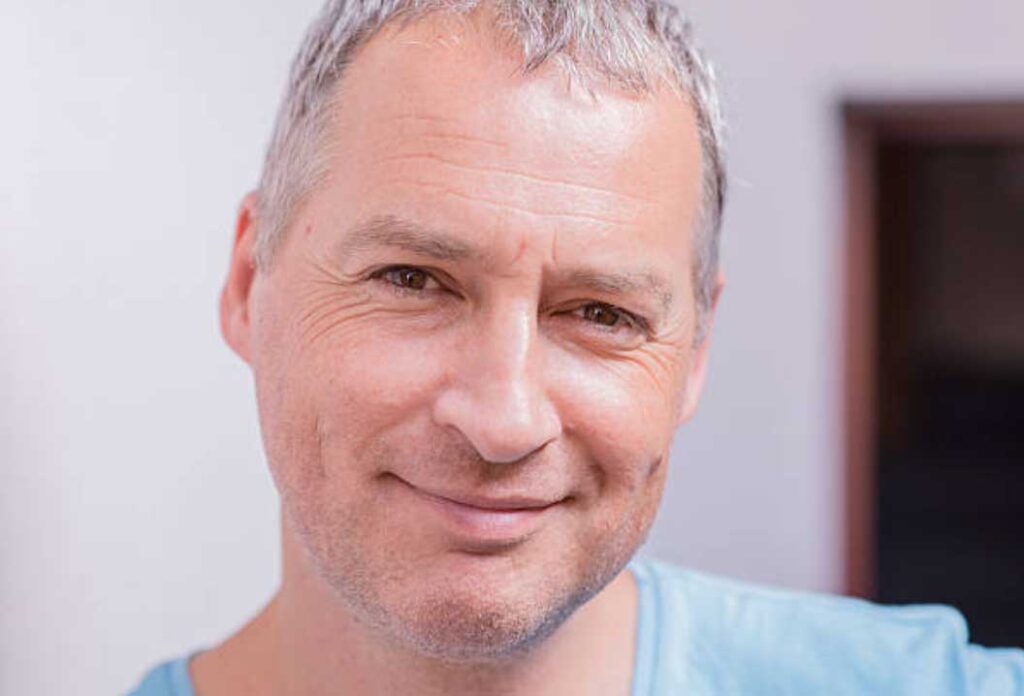
FAQs about Combining Procedures with a Facelift
Can I combine a facelift with non-surgical procedures like skin relaxing injections or fillers?
- It is not recommended to use dermal fillers intraoperatively during a facelift (fat is always the preferred facial volume restoration modality). Although muscle relaxing injections can be performed at the time of the surgery it is usually a better choice to have treatment either a week or so prior to the surgery or 4 weeks after surgery (if the agent is administered during the surgery it is highly likely that the increased blood flow to the areas that have been operated on (as a result of inflammation) will effectively wash the botulinum toxin away resulting in little benefit (in the same way that it is not advisable to exercise or have a hot bath for the first day after having wrinkle relaxing injections normally).
Is it safe to have multiple facial procedures done at once?
- Combining facial procedures can be safe when performed by an experienced and qualified surgeon. However, the safety also depends on your overall health and the specifics of the procedures planned.
How long does recovery take when combining a facelift with other procedures?
- Recovery time can vary depending on the procedures combined, but generally, you might need a few weeks to recover. Most people return to normal activities within 2-4 weeks, with full recovery taking a few months.
Are the results of combined facial procedures more long-lasting than a facelift alone?
- Often, the results can be more long-lasting, as combining procedures addresses various aging signs across different areas of the face, leading to a more uniformly youthful appearance.
Can combining procedures save me money in the long term?
- Yes, combining procedures can be cost-effective in the long run. It reduces the need for multiple surgeries and recovery periods, which can save on surgical fees, hospital charges, and time off work.
Further Reading about Facelift Surgery with Consultant Plastic Surgeon Anthony MacQuillan
- Read more about Top Tips to Sleep Better After Facelift Surgery
- Read more about Facelift Surgery Page
Medical References about Facelift
- Facelift – Cleveland Clinic
- Facelift Surgery – Australian Society of Plastic Surgeons
- Facelift: What You Need to Know – Medical News Today
- Face-lift – Mayo Clinic
- Preoperative Risk Factors and Complication Rates in Facelift – Oxford Academic

